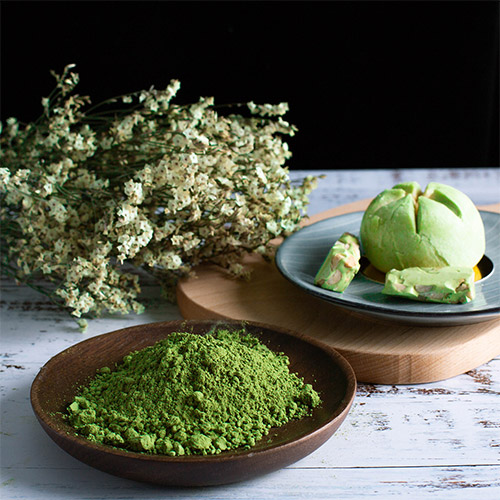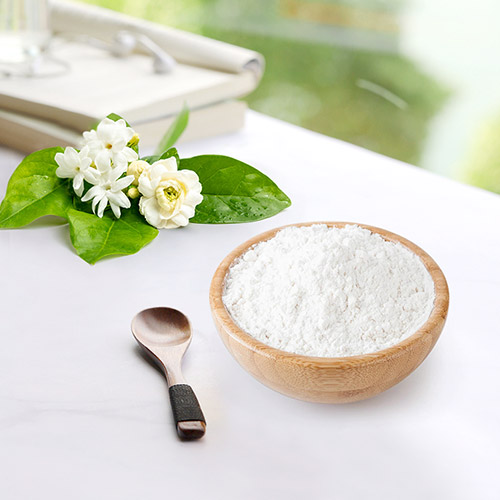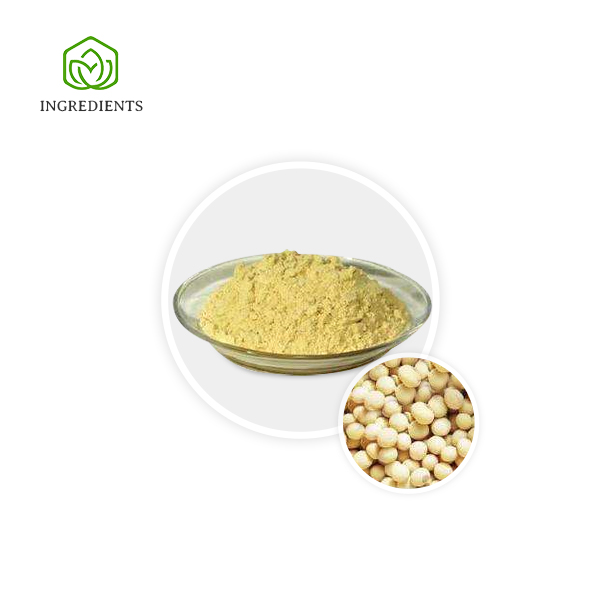
- Products
- Organic Product
PRODUCTS
Soybean saponin
Product ingredients: soybean saponin
Product specification: 80%
Detection method: HPLC
Product appearance: light yellow or off-white powder
Storage conditions: This product should be sealed and stored in a dry, dark, cool and well-ventilated place.
Extraction source: This product is extracted and refined from the kernels of the annual herbaceous soybean of the genus Fabaceae Soybean.
What is soybean saponin?
A biologically active compound known as soybean saponins (soyasaponins) is obtained from the leguminous plant soybean and its straw. The raw materials are plentiful and inexpensive since soybeans are widely planted in north-central China, particularly in Northeast China. It is a type of mixture made up of many chemicals and is a triterpenoid oleanolic acid saponin. Studies conducted both domestically and overseas have demonstrated the physiological benefits of soybean saponins, which include anti-tumor, anti-virus, anti-free radical, and anti-lipid oxidation properties. It has already seen some early success in the fields of cosmetics, medicine, and food.
Component structure
Sugars, uronic acids, or other organic acids are combined with sapogenins to form saponins. Most saponins from the same plant have comparable structures, and saponins have complicated structures and high polarity. Glucose, galactose, rhamnose, arabinose, xylose, and other pentoses are typical sugars that make up saponins. It can be classified into two groups based on its chemical makeup: triterpene saponins and steroidal saponins. Tetracyclic triterpenes and pentacyclic triterpenes are the two categories into which terpenes can be split, with pentacyclic triterpenes being the more prevalent. The fundamental skeleton of the sapogenin of steroidal saponins, which has 27 carbon atoms, is known as spirastane (spirastane), and its isomer isospirostane (isospirostane).Plants of all kinds contain almost a hundred steroidal sapogenins. Different sugars and their unique binding sites combine with saponins to create a variety of saponins.
Environment and heredity are the key determinants of soybean saponin content. Chinese soybeans had the greatest saponin concentration (about 0.3%), according to research by Japan's Shiraiwa, which analysed soybeans from China, Japan, Canada, the United States, and Japan. Later, Tsukamoto et al. examined the saponin content of other soybean varieties' hypocotyls and concluded that genetic variables have a stronger influence on the saponin content of A series soybean than environmental factors do. Analyzing the A series saponin content of soybean seeds at the same time revealed that soybean saponins of the Aa and Ab types made up roughly 16.6% and 76.1%, respectively, of the total A series content.The lower the A-series soybean saponin content in soybeans, the better, as this type of soybean saponin is the main culprit behind the bad flavour of soybeans, in accordance with the quality requirements of food processing. A series of soybean saponin-free varieties have reportedly been created through genetic breeding, according to reports in Japanese literature.
In conclusion, the hypocotyls of soybean seeds are where the A series of soybean saponins are primarily found, and the composition and content of these compounds vary with variety and environment.
Main properties
The general characteristics of saponins are shared by soybean saponins. Pure soybean saponin is a white powder with a bitter, pungent taste that irritates different body areas' mucous membranes. Soybean saponin is soluble in water, readily soluble in hot water, hot methanol, hot ethanol, and water-containing dilute alcohol. It is insoluble in ether, benzene, and other low-polar organic solvents, and it is more soluble in pentanol and water-containing alcohol. There is no visible melting point for soybean saponins since they frequently disintegrate before melting despite having a high melting point. The aqueous solution of soybean saponin, an acidic saponin, is combined with ammonium sulfate, lead acetate, or other neutral salts to create a precipitate.Soybean saponins can be extracted and separated using this characteristic.
Efficacy mechanism
One of the saponins of significant scientific significance and widespread application is soybean saponin. Research on soybean saponins in the 1970s was mostly focused on studies on their detrimental effects on flavour and nutrition, with the recommendation that they be eliminated during soybean processing. Since the 1980s, numerous academics have established that soybean saponins have antithrombotic and actions that decrease cholesterol. Research on soybean saponins made significant strides in the middle of the 1990s with the discovery of diverse parts and chemical structures, particularly the identification of saponins that bind to DDMP. Many studies conducted both domestically and abroad in recent years have revealed that soybean saponins are remarkably low in toxicity and adverse effects.
This offers both a secure assurance for the widespread use of soybean saponins as well as a safe and trustworthy proof for conventional soybean food. Tests of soybean saponins' biological, physiological, and pharmacological activities have shown that they have a variety of advantageous physiological benefits as well as no adverse effects on humans.
2.1 Reduce the production of lipid peroxidation with anti-lipid oxidation agents.
2.2 Effects against oxidation and free radicals
Antithrombotic impact, 2.3
2.4 Improve immune system control
Anti-tumor impact 2.5
Antiviral impact
2.7 Control the circulatory and nervous systems
Detection method
3.1 Spectrum analysis
By using the absorbance value of a material with known concentration at a particular wavelength to calculate its concentration, spectrometry is a technique for creating a standard curve. The two primary subfields of spectroscopy are ultraviolet and visible light spectrophotometry.
Chromatography, 3.
One of the more popular techniques for analysing and finding soybean saponins is chromatography. This technique continues to hold a unique place in the separation and examination of natural products.
Take advantage of prospects
A single use in food
Food additives made from soybean saponins can have foaming and emulsifying effects. Japanese researchers have studied this topic in depth and created health food, diet food, saponin juice, and other beverages with soybean saponin.
Application in healthcare
Soybean saponins have a wide range of physiological properties that influence their potential for use in medicine, including reducing blood lipids, antioxidant activity, atherosclerosis prevention, immune system control, etc. According to reports from other countries, soybean saponin may be made into a medication to treat cardiovascular conditions. By lowering the level of cholesterol in plasma and preventing thrombus formation, it can lessen the risk of cardiovascular diseases. In addition, some foreign researchers have used soybean saponin in the creation of weight loss medications with some success due to its properties that can lower blood cholesterol and triglyceride levels.
use in cosmetics
It has long been known that soybean saponin is used in cosmetics. Japanese academics have created cosmetics with soybean saponin and submitted a patent application. Its impact in real life has been verified. Soybean saponins can stop skin conditions brought on by lipid peroxidation and lessen their frequency. The foaming and emulsifying abilities of soybean saponins make them useful as additions in many pharmaceutical and cosmetic products.
SEND ENQUIRY
If you have any enquiry about quotation or cooperation, please feel free to email us at E-mail or use the following enquiry form. Our sales representative will contact you within 24 hours. Thank you for your interest in our products.





